Last Updated on June 25, 2025 by Jocelyn
Cilantro, also called Coriandrum sativum, is a popular herb used in many dishes around the world. It grows best in spring or fall and can be planted in pots or directly in garden soil.
With enough sunlight and slightly moist soil, cilantro grows quickly. It does not like frost, but with the right care, it can be a great addition to your herb garden.
Cilantro grows in five main stages: seed germination, seedling, vegetative growth, flowering, and seed production. Germination takes about 7 to 10 days.
Then the plant grows leaves, followed by small flowers, and finally produces seeds. The full cycle usually takes 2 to 3 months, and harvesting the leaves often encourages more growth.
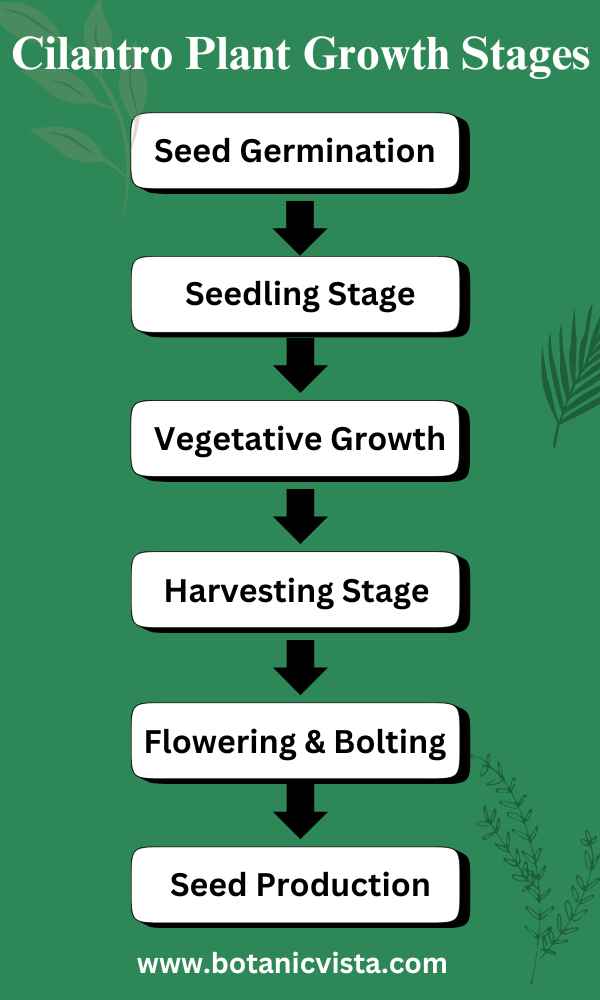
Table of Contents
Toggle6 Different Cilantro Plant Growth Stages
Growing cilantro involves several distinct stages, each essential for a healthy, productive plant. From seed to harvest, cilantro needs specific care and conditions to develop well.
Knowing these stages ensures you can provide the best environment for optimal growth.
1. Seed Germination
Cilantro seeds are tiny, round, and brown. To help them sprout, ensure the soil is moist but not too wet.
The best temperature for cilantro seed germination is between 55 and 70 degrees Fahrenheit. Making sure the soil is warm and not too dry is crucial.
Gently watering the seeds every day helps. In about 7 to 10 days, tiny green shoots will appear. Keeping the soil soft and moist helps the seeds start growing well. Planting cilantro is a fun and easy way to grow fresh herbs at home!
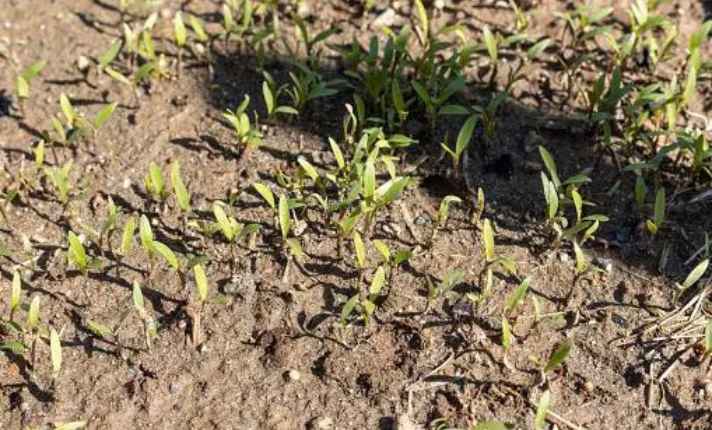
2. Seedling Stage
When cilantro seedlings first appear, they are small and green with two leaves. These leaves, called cotyledons, are different from the cilantro leaves you’ll use in cooking.
At this stage, it’s important to give the seedlings plenty of light. Water the seedlings gently to keep the soil moist but not too wet.
Too much water can cause the seedlings to rot. Space the seedlings a few inches apart so they have room to grow. If they are too close together, they might not grow well.
Sometimes, cilantro seedlings can face problems. If they look weak or yellow, they might need more light or less water.
If pests like aphids appear on your cilantro, you can gently wash them off with water to kill aphids. By paying close attention to your cilantro seedlings, you can help them grow strong and healthy.
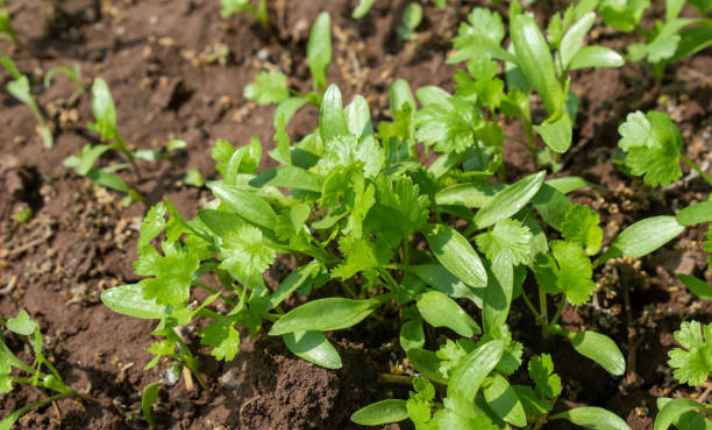
3. Vegetative Growth
In the vegetative growth stage, cilantro plants grow true leaves. These leaves are bigger and look like the ones we use in cooking. It’s important to give the plants good nutrients.
Compost can make the soil rich and healthy. Water the plants regularly but don’t overwater. The soil should be moist, not soggy.
Thinning the plants is key. Remove some seedlings if they are too close together. This gives each plant more space. They need space to get enough light, water, and nutrients.
Aim for about 6 inches between each plant. This helps them grow stronger and healthier.
Watch the plants for signs of stress. Yellow leaves might mean they need more nutrients or water. Ensure the soil drains well and isn’t too compacted.
This helps the roots grow deep and strong. Protect the plants from extreme weather. Mulch can help keep the soil moist and stable.
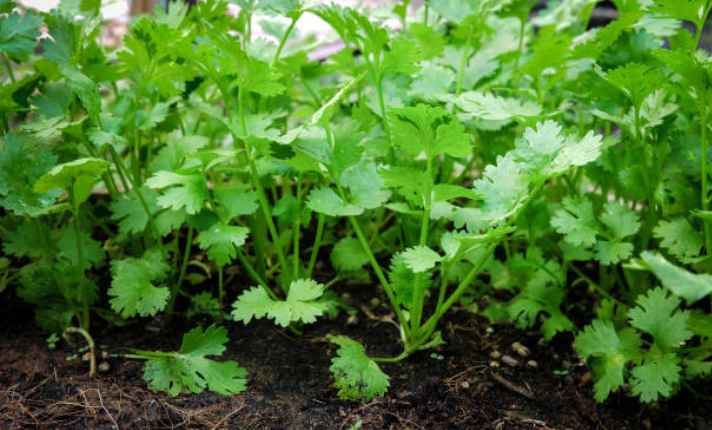
4. Harvesting Stage
When it’s time to harvest cilantro, look for deep green leaves that are 4 to 6 inches long. Use scissors or a knife to cut the stems, not pulling the plant out, to keep the roots intact for more growth.
Harvesting cilantro every one to two weeks keeps the plant healthy and prevents bolting, which makes the leaves taste bitter.
Cutting in the cool morning helps maintain the best flavor and plant health. Following these practices ensures fresh and tasty cilantro all season long.
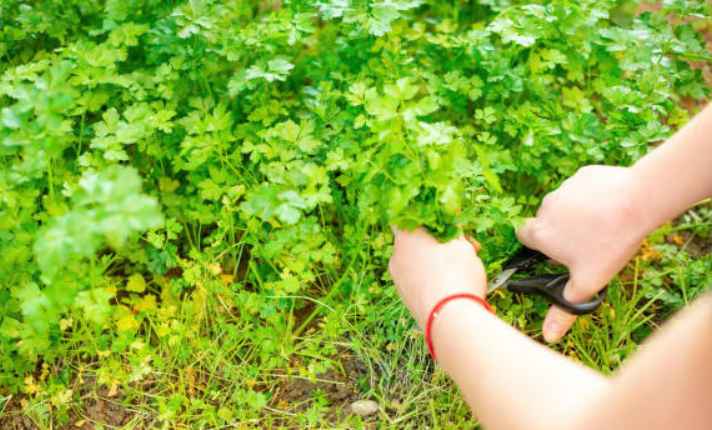
5. Flowering and Bolting
One important stage is when the plant starts to flower and bolt. You might see tiny white flowers at the top of the plant.
This is a sign of bolting. Bolting happens when the weather gets too warm, making the plant grow tall and flower quickly.
To keep your cilantro from bolting too fast, plant it in cooler weather and keep the soil moist. If cilantro bolts, its leaves can taste bitter, and the plant won’t live as long.
So, for the best flavor, try to prevent bolting by giving your cilantro the right conditions to grow.
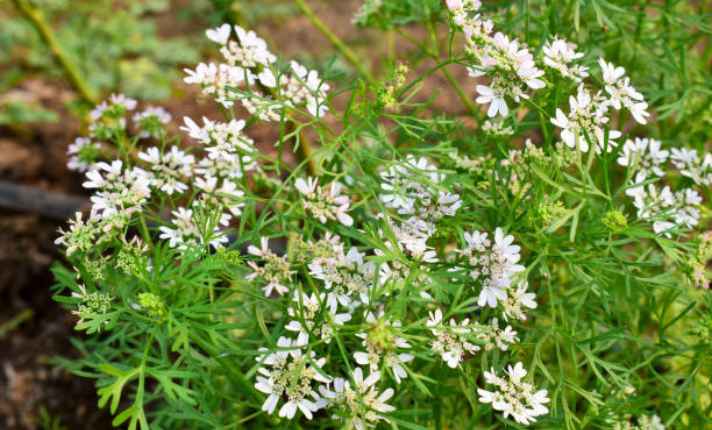
6. Seed Production
When you plant cilantro seeds, the first step is seed production. Cilantro seeds, also called coriander seeds, are tiny and round.
You plant them in soil that is warm and moist. In a few days, little sprouts begin to pop up. These sprouts are the baby plants. They grow quickly, reaching for the sunlight.
As they grow taller, you see the leaves change shape. At first, the leaves are small and rounded. Later, they become bigger and look like fans. You need to water the cilantro regularly but not too much. Keep the soil just damp enough.
Soon, the cilantro plant starts to get flowers. These flowers are tiny and white. They will turn into seeds again, completing the cycle. If you let the flowers grow, they make seeds that you can collect and use to grow new cilantro plants next time.
Tips for Growing Cilantro Plants Successfully
Growing cilantro at home gives you fresh herbs for your kitchen. However, to keep your cilantro plants healthy, it’s important to know their needs and provide the right care.
Below are some essential tips for successfully growing cilantro plants, covering everything from soil and watering to pest control and harvesting.
| Key Points | Tips and Insights |
| Soil | Use a mix of organic compost and sandy soil with a good texture. Avoid clay soil to prevent waterlogging and root rot. |
| Sunlight | Ensure the garden spot receives full sun for at least 6 hours a day. Provide shade in hot temperatures to prevent bolting. |
| Watering | Water regularly to keep the soil moist, not wet. Overwatering can encourage fungal diseases and rot. |
| Pest Control | Watch out for common pests like aphids and whiteflies. Use pest-resistant varieties and organic methods. Cut off affected leaves if pests appear. |
| Fertilizer | Use a light fertilizer to improve growth but avoid heavy doses to prevent premature flowering. |
| Harvesting | Harvest outer leaves first to keep the plant productive. Plant new seeds every few weeks during the growing seasons for a continuous harvest. |
| Pots | Cilantro can be grown in pots indoors where temperature and light can be controlled more easily. |
| Monitoring | Look out for yellow spots on the leaves, which can indicate nutrient deficiencies or pest problems. |
FAQ’s
Q: How Long Does It Take for Cilantro to Fully Grow?
A: Cilantro, also called Coriandrum or coriander, is a fast-growing herb. It takes about 4-6 weeks to grow from seed to full size in cool-season weather. After planting the seeds, you can start harvesting in about half a month.
Q: How Do You Keep Cilantro Growing All Summer?
A: Cilantro plants need sun and shade. Cover seeds with ¼-½” of soil and ensure they get 6 hours of sun. Water well to keep the soil moist, not dry.
Use a shade cover during hot afternoon hours and place cilantro in a pot if your area gets too hot.
Q: What Plant Does Cilantro Turn Into?
A: The cilantro plant, or Coriandrum sativum, grows from a seed into a plant with stems and leaves. In the US, the leaves are called cilantro, while the dried seeds are known internationally as coriander.
Q: What Is the Timeline for Cilantro?
A: Sow cilantro seeds in early spring. Harvest leaves starting at 2 weeks and every 2 to 3 weeks after. Plants should be spaced 6 inches apart and harvested before they go to seed.
Q: What Month to Plant Cilantro?
A: Plant cilantro seeds in early spring or fall. The optimal temperatures for growing cilantro are between 50-80 degrees Fahrenheit. Loose, well-draining soil is best for fast growth.
Conclusion
Growing cilantro at home is a simple and fun activity. With regular watering and plenty of sunlight, your cilantro will grow well.
Freshly picked cilantro can enhance the flavor of your meals and add a special touch. Plus, growing your own herbs connects you with nature and offers a sense of accomplishment. Enjoy the fresh taste and the joy of gardening!
Find Out More Here:

